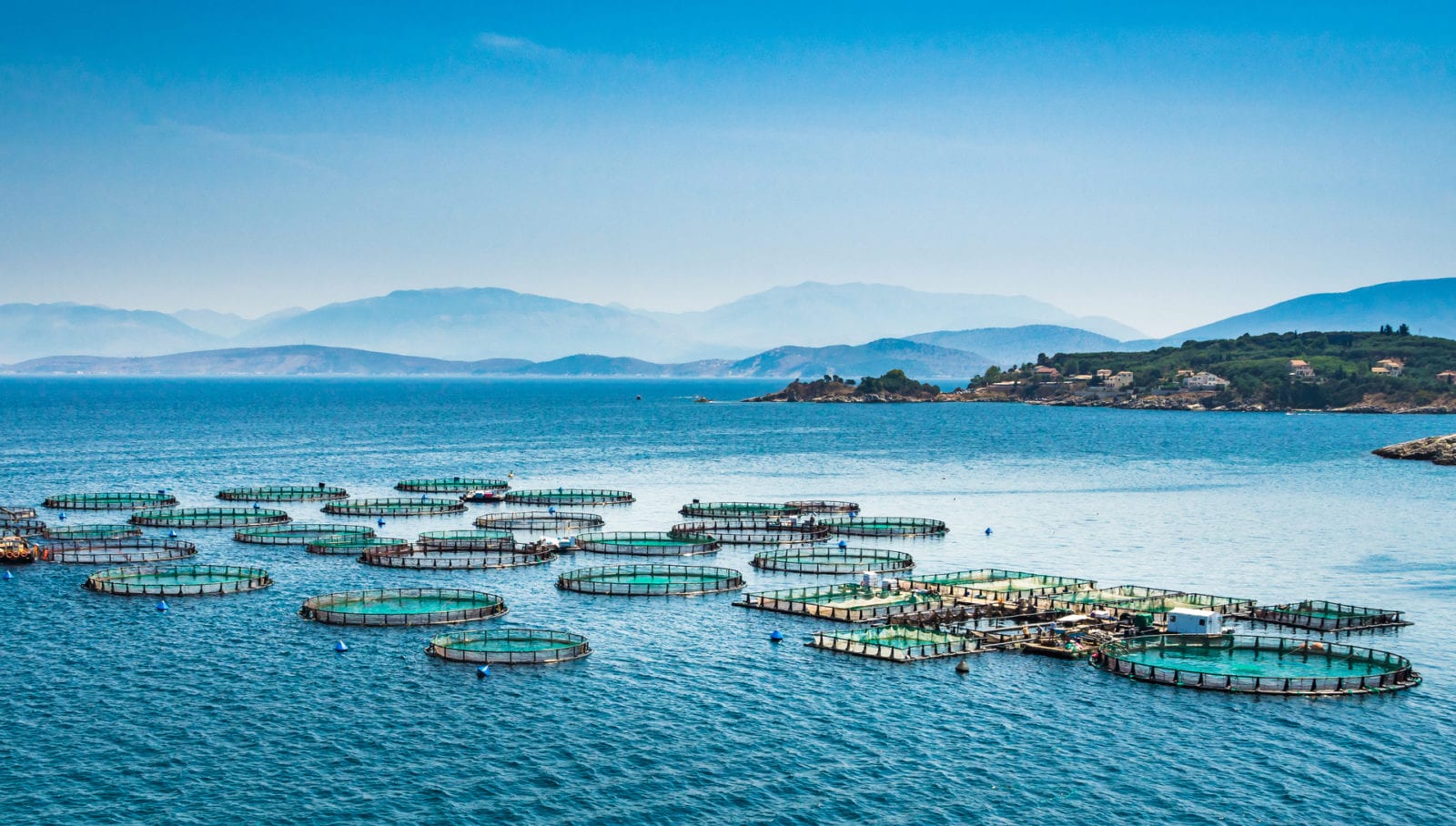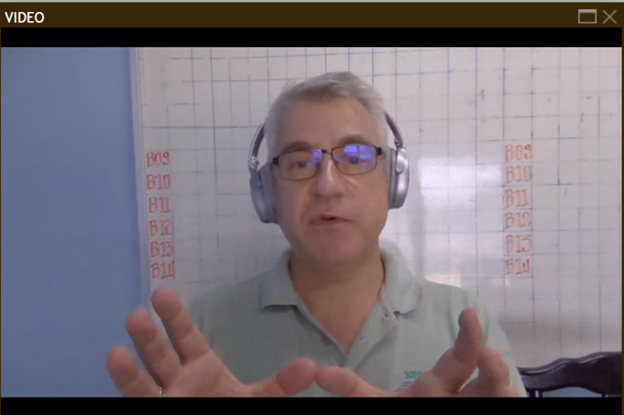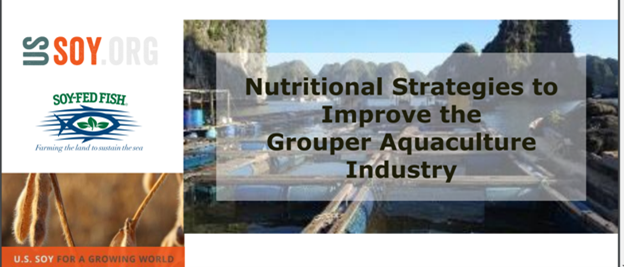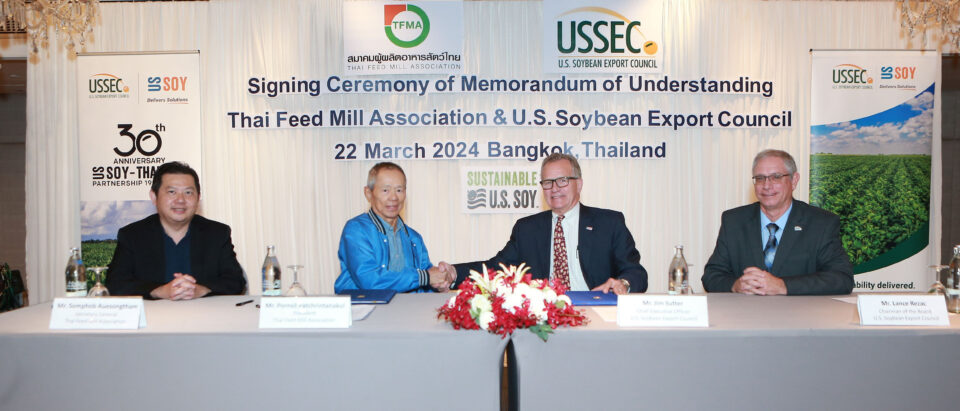
USSEC recently completed a series of virtual technical webinars focused in animal, aquaculture and human protein production to support Southeast Asia’s food and livestock industry.
Global demand for seafood is growing at an unprecedented rate. By 2030, an additional 41 million tons of fish per year will be needed to maintain current levels of seafood consumption. Aquaculture is the solution, and soy-based feed is a sustainable and healthful alternative to traditional fish-based aquafeeds.
In particular, grouper has been identified as a desired fish in the live reef food fish trade in Southeast Asia due to their desirable taste, hardiness in captivity, efficient feed conversion, rapid growth, high market demand and good price. However, one of the limiting factors to the expansion of grouper is the high cost of feed.
This was one of the topics at hand during a technical broadcast series, hosted by the Southeast Asia region of the U.S. Soybean Export Council (USSEC). Running from Sept. 25 to Nov. 26, the series focused on animal, aquaculture and human protein production to support Southeast Asia’s food and livestock industry as it recovers from the impacts of COVID-19 and African Swine Fever. In total, more than 530 attendees registered for 14 broadcasts. The technical broadcast series featured over 20 industry and technical experts from the United States, Asia, Africa, Australia, and Europe, sharing their knowledge on topics such as soy for human consumption, soy in animal feed, and soy in aquaculture.
The “Soy in Aquaculture” webinars took place throughout November. The monthly program featured international experts in the aquaculture field who:
- Presented on the use and value of soy in formulated feeds for aquaculture production.
- Highlighted the advantage of sustainable U.S. Soy based aquafeeds.
- Addressed the latest issues and concerns in aquaculture.
- Provided training to achieve efficiency, profitability, and sustainability in aquaculture operations.
Igor Pirozzi, a senior fisheries scientist for Aquaculture Nutrition Research at NSW DPI Port Stephens Fisheries Institute, focused on “Nutritional Strategies to Improve the Grouper Aquaculture Industry.” His presentation spotlighted research conducted from 2016-2018 and investigated the development of soy aquafeeds and the improvement of feed management strategies for grouper.
Grouper is a carnivorous fish, requiring high protein levels in feed. Since the available pelleted feeds for tropical marine fish are mostly dependent on fishery-based ingredients, the feeds are becoming more expensive to produce. Finding ways to improve nutritional strategies for feeding grouper is critical to helping the industry grow long-term.
Pirozzi pointed out that many different species of grouper are being cultured in Southeast Asia. However, these species all have specific and potentially different requirements for grow out culture conditions. He also shared that currently not enough information describes the requirements of all commercially important species.
“For example, optimal stocking densities for the grow out of grouper spp., in cage or ponds, are generally unknowing yet density dependent effects on feeding behavior can be significant,” he said. “Nonetheless, some generalizations can be drawn across the Epinephelus spp. and other grouper species that will ensure a good chance for success with good growth, health, and reduced mortality.”
His study concluded that grouper show great potential for flexibility with feed formulations to include relatively high levels of alternative protein sources such as soy products, provided nutrient requirements are met. Pirozzi also determined that grouper is a hardy species well-suited for aquaculture production. His research found they tolerate high stocking densities and one feeding per day is adequate for E. Coioides.
Additional research into specific nutrient requirements is needed, especially as it relates to essential amino acids, essential fatty acids, and micronutrients.
“Long-term studies are still lacking, and on-farm trials are required,” Priozzi said. “There also needs to be studies into the implication of soy diets on grouper liver histology.”
These technical seminars aimed to provide industry professionals with the latest updates on U.S. Soy applications for food and feed, as well as technical advancements and developments in human protein, animal protein and aquaculture.
Looking ahead, USSEC will continue to support worldwide aquaculture growth, differentiating U.S. Soy, highlighting the U.S. Soy Advantage, and supplying end users with a trusted, consistent high-quality source of nutrients.
This technical broadcast series is available for viewing on-demand. For details and to view Pirozzi’s presentation, visit the event website.


